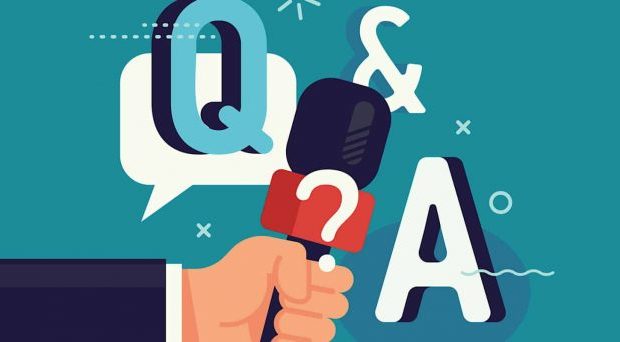
KPI SUCCESS DEPENDS ON YOU
Are we making e-commerce too complicated? Often when we brainstorm about a new customer and how to grow their revenue, we imagine the online store as a physical store. This visualisation makes everything seem much simpler. Just imagine you are a supermarket manager. You come into work and an employee tells you that 100 people have abandoned their shopping trolleys full of food. The obvious question would be, where did they do this and why? Let’s say that they all abandoned at the fish counter because of the smell. Well, you can fix that.
However, on an online store, unless you have set up Google Analytics add- to-basket events, it’s impossible to know where those full baskets are being left. Creating a segment in Google Analytics to only show people who add something to the basket and then exit the site without buying is fascinating. What tends to emerge is some category pages where people just give up and knowing this means you can optimise these pages.
Coming back to the supermarket analogy, imagine walking past the self- checkouts and seeing customers kicking the tills in frustration. Again, you would do something about it, yet on a website click rage is common and most of the time not seen and not acted upon.
If 25 people asked your supermarket employees a question, like ‘Where is the Gouda cheese?’ and got an answer and then you watched the customers run out the door, you would know something was wrong. Onsite search has exits like this every day.
Or how about people walking a supermarket aisle with only one item in their basket, ignoring everything else. Not one person, but many people. As a supermarket boss you would talk to them and ask why they don’t buy something else at the same time. You would get instant feedback, but it’s not common to survey customers on an e-commerce store and make changes.
The point is that what’s not seen gets ignored. You need to bring the pain of your customers right smack bang in front of your team, so it gets acted upon. It’s hard to watch customers leave the store. Buy a big TV and show live users on the store moving their cursor, so that everyone understands what’s important.
WHERE TO START
A good e-commerce owner is like a great investor. The main decision is where to invest time and money.
Joel Greenblatt’s book You Can Be a Stock Market Genius sounds like a lofty title. But when you look at Joel Greenblatt’s investing track record you must take your hat off to him. Over a 10-year period he averaged a 50% return on investment. That’s crazy good! This means that every 1.7 years he would have doubled your money. So, what’s his secret?
Well, there are many investments you can make but you don’t have to make them all. Joel focuses on those investment areas where he has the wind behind him. He looks for special situations where in the past on average things have gone well.
Take spinoffs, for example; on average, these tend to outperform the market. So if you invest in spinoffs, you are already playing off the ‘ladies tee’ and starting a little ahead of the market.
He also invests in areas that are too complicated for the average investor to understand or are places that stink and put investors off. If he can find an area where most people will put it into the ‘too hard’ basket but with a bit of digging gold nuggets can be found, this is where he will invest. Here he would look for bankruptcies, warrants and options. Again, because a lot of the competition has given up the wind is behind him when he makes an investment based on sound research.
So, what’s this got to do with us as e-commerce site owners? Well, we are investing in our websites all the time, either in time or in actual money. Where we allocate that spend is important is it dictates the return we get. Also given it’s our own business we should be getting decent returns.
If we are to invest in our businesses like Joel, then we must look for where the wind is behind us. This means looking for what’s already working and making this go further. Don’t invest in everything, invest more in what’s working. Invest in the product categories that do well. Invest in the customer types that buy the most. Invest in the marketing channels that work.
This might sound obvious. But time after time we see e-commerce sites trying to expand to new countries before they have maxed out the marketing spend in their own market. We see sites adding new product ranges when they have not dominated the existing categories they serve.
We must also look for those ‘too hard’ categories that other competitors avoid but customers want. Think back 10 years in e-commerce and those businesses that first offered ‘free delivery, free returns.’ Much of the competition would have put this into the ‘too hard’ category thinking that they would lose money. But those that tried it realised it was a winner.
If you are a business to business site, maybe customers want a certain payment plan or buying on account. Most sites will put this down as ‘too hard’ but it might be a game changer.
WHERE TO END
Where to end? This is a trick question because there really is no end to the optimisations you can do.
In this book we have been looking at the KPIs and sales funnels as a whole across all marketing channels and traffic types. But as you grow you can segment them down into silos that make sense, such as AdWords, existing customers, new customers, lapsed, etc.
Doing this fits nicely into the wave of artificial intelligence that’s being applied to e-commerce as we write. It’s the dawn of AI and that’s here to stay for e-commerce. What this means for us marketers is that the one-size-fits-all split test just does not cut it anymore.
Look at the tests run over the past five years on sites like WhichTestWon and you will see big AB split tests mostly across all traffic; for example, split testing two different category header images is now dead. We need to go deeper. How? With artificial intelligence adding to the equation we need to think of our e-commerce site as not one site, but many sites for all the segments of users coming to it. Given that, for now at least, the magic number of conversions per month needed for an AI engine to optimise on Facebook and AdWords seems to be around 50, we need to slice the website into at least 50 conversions a month. This might look like the following segments:
- Existing customers who bought within the last six months.
- Existing customers who bought within the last 12 months.
- New visitors.
- Repeat visitors within the past 30 days but never bought.
- Lapsed customers.
If we have at least 50 conversions per month for each of these segments, then we should be able to optimise them further.
Once you are done, you might have very different user experiences for each segment, as what converts one segment might lower the conversion rate in one and vice versa.
Using free tools like Google Optimize we can start to segment the traffic into silos like the above and find out exactly what makes them buy.
You will find out that the traffic to your site is very different in motivation and buying trigger. For example, we found that for segment 1, making the reward points on the checkout MASSIVE had a big difference in their conversion rate. However, reducing the reward points prominence for segment 3 had no effect and instead putting in testimonials here was much better.
The key eyeball real estate on your e-commerce store is quite small. The places that people focus on are narrow and they will miss your main sales points unless positioned carefully. For example, an existing customer knows you have free returns and free delivery and so might respond better to other messaging, whereas this is key for first-time buyers. So, start cutting your traffic into segment silos and throw some variants at an AI engine and let it find out what converts best. It’s exciting times.
IN SUMMARY
Lastly, remember that your KPI success ultimately depends on you.
Let’s recap the most important points. You’ll need to define your KPIs and use Google Analytics and other methods to determine whether your site falls below the average statistics in the three areas we’ve established:
11% of visitors will add a product to their basket.
Of that 11%, 55% will proceed to checkout.
Of that 55%, 84% will place an order.
The other KPIs are going to be unique to your industry and so it’s important to measure them and improve them. While this book is a start, it’s hard to provide different industries with a blanket rule of thumb. You need a professional to look at the statistics and evaluate the ins and outs of your website for the best results.
Start with the bounce rate for your categories, products and search results at the add-to-basket, basket-to-checkout and check-to-order confirmation steps, then invest your time and money at the most critical point.
Once you’ve finished this, benchmark your website against your defined KPIs again. Repeat the process, month after month, to ensure your e-commerce site continues to perform the way you want it to and provides you with the increased revenue you’re looking for.
Most importantly, don’t rely on your e-commerce agency to do everything for you. Get into the mix and evaluate your category pages, product pages and search terms yourself. Many of these items may not work the way you want them to, but you may have better insight into the reason why. You know your product better than anyone—or you should!
Also, set KPI targets for add to basket, basket to order, AOV, traffic, etc., to take into seasonality. Some months you’re naturally going to want to spend more on AdWords and reach for higher conversion rates. This is one of the first things we do with our new clients. We get the monthly KPIs sorted out so that we know how well we are doing each month.
Continually come back and decide where you want to invest to keep on increasing your statistics. This will result in steady and predictable scaling of your e-commerce business, and that’s exactly what you want!
We hope this information has helped bring clarity to the way you think about your products and the entire purchasing process on your e-commerce site. Keep learning and growing! We are always here to help.
GO FOR IT
Recently we had lunch with a good friend of ours. He runs a very successful e-commerce store selling outdoor sports goods. He started with about 5K worth of personal funds and has grown in five years to be a global business turning over millions. We dropped what we thought was a simple question: ‘If you went back three years what changes would you make to your business knowing what you know now?’
He replied, ‘I would set my expectations higher; the only reason we didn’t do more revenue that year was because I thought that it was a big number. If I had changed my outlook and believed that x turnover was too low, then we would have done more.’ We see this a lot.
Sometimes the limit on an e-commerce business is our own belief in what it can do. We think that hitting a million in sales is amazing because we have never hit it before. But what if you could easily be doing more?
Have you set your business thermostat too low? Why have you set it at that level? Could it go much higher? If you spend 5K on AdWords and get back 40K—why not spend more?
We don’t realise how scarce the opportunity is or how time dependent it is; even more so if this is our first e-commerce business and it’s a big hit. Imagine you are prospecting for gold and you hit it big first dig. You would be convinced you were a gold mining genius. However, if you have been digging for gold for years and failed and failed, when you hit gold you would realise how difficult it is.
If you have good arbitrage in your business, let it run, as it’s as rare as hen’s teeth and there are a thousand people behind you trying to find the vein of gold you are sitting on. Go for it, now, today!
KPI WORKBOOK
KPI 1: ADD-TO-BASKET RATE
Your product pages are just as, if not more, important than your category pages, especially when using Google Shopping. Make sure all essential details and the Add to Basket button is above the fold, provide info about other similar items and make sure customers can easily return to previous products they were looking at. Put it to use:
- 11% of visitors should be adding to their baskets. If your percentage is less than 11%, this KPI needs attention.
- Determine your type of buyer: spontaneous, methodical, humanistic or competitive.
- Adjust your product pages so that all pertinent information occurs above the fold. This makes it easier for customers to see everything and make quick decisions.
- Look at the middle reviews to determine what your site is doing wrong.
- Improve your worst-performing searches to increase add-to-basket rate.
Answer the following questions:
- What type of buyer does your website appeal to? Why?
- Take a look at your product pages and category pages. What areas can you improve on?
- What is your worst-performing search? Why do you think it performs so poorly?
- Take a look at your middle reviews. What areas do these reviews indicate need work? Write out your plan for improvement here.
KPI 2: WEBSITE SPEED AND CAPACITY
Customers spend an average of six minutes on your website. If your site is running slow, it’ll achieve a lot less in that amount of time than if it is running at a high speed. The faster your website speed, the higher your average order value and conversion rate will be. Put it to use:
- Slow page load can cause Google penalties that affect your page ranking.
- Measure your web speed often. This will help increase conversion rates.
- Google Analytics can help you measure your website speed, as well as other sites like www.webpagetest.org.
- Your site should measure under four seconds.
- Increasing speed and capacity involves using clean code, varnish caching and optimising the server.
Answer the following questions:
- Have you experienced slow page load recently or seen a lot of browser abandonment from visitors?
- What is your current website speed? Use the information in this chapter to check the speed via webpagetest.org and Google Analytics.
- What are three things that could be causing the reduction in website speed? How can you fix them?
- Are there certain times of the year when you need more website capacity (e.g. Black Friday, Christmas)?
- How do you plan on making sure your website is ready for visitors during this peak time?
KPI 3: LIFETIME CUSTOMER VALUE
Tracking lifetime customer value involves a number of different steps, including considering the type of customers you have, the coupons they use, their overall satisfaction and their delivery choices. Put it to use:
- LTCV helps you track the products that lead to the highest lifetime value.
- Providing discount coupons, in the right setting, helps increase lifetime value.
- Use ScentTrail to track the type of customers you recruit and which products work best to recruit them.
- Upload customer email lists in Google AdWords so you can continually show your ad or products to customers on the list.
- Track this KPI regularly and watch it year after year to see how it changes.
Answer the following questions:
- What customers are you recruiting? Does your business naturally lead to high repeat purchase rates?
- What delivery options do your customers choose most often? What delivery rates do repeat customers opt for?
- Has your average review rating increased or decreased since your business began? This can tell you immediately whether your customers are happy with you and your products.
- How do you track the effect of marketing channels? After reading this chapter, what do you think the benefits of using ScentTrail to track LTCV marketing channels would be?
- Would you be willing to offer a lapsed customer a special rate if it meant increasing your LTCV overall? What type of special offer do you think would encourage a lapsed customer to come back to your website and make a purchase?
KPI 4: GROWTH OF SIX-MONTH CUSTOMER RECRUITMENT YEAR ON YEAR
Your recruitment rate should stay the same or increase year on year. If you compare the last six months to the same time last year and the rate is lower, there is a definite issue. Sometimes it’s another KPI. Other KPIs that affect conversion rates can affect your recruitment rate. Fixing these other indicators will usually help increase this KPI.
This refers to the total number of customers you have recruited in the last six months. Add these together, then compare them to the same data gathered the prior year. Put it to use:
- This KPI helps you determine if your business will continue to grow.
- Cannot be found in Google Analytics, but may be worked out in Excel.
- If this number declines, it means you’re experiencing less growth. This is a warning sign.
- Some KPIs will affect your recruitment rate. If they aren’t doing well, your recruitment rate will show it.
Answer the following questions:
- Use an Excel sheet to calculate your current six-month recruitment rate. What is it? Compare it to the previous year’s. Did the amount increase, decrease or stay the same?
- If the number decreased, look at the other KPIs. Are they functioning as they should be? If not, what steps will you take to resolve this issue?
- Consider other trackable things you’ve done to contribute to a lower recruitment number. Write them here and check each one.
- What marketing channels do you use? How are they performing?
- What steps can you take next to increase your six-month customer recruitment rate year on year?
KPI 5: AVERAGE ORDER VALUE ROBUSTNESS
While perhaps not the first KPI you look at, the average order value is probably the most important of all seven. If this value is too low, your add-to-basket rate or checkout-to-order rate cannot grow. It also affects your lifetime customer value, revenue and marketing costs.
The average, compared year on year, of the average value of orders and traffic growth. Put it to use:
- You should always keep an eye on your average order value, as it can stifle or improve growth, depending on whether it is low or high.
- You should have a high AOV and 1.5x purchase frequency per year or a low AOV and 5x purchase frequency per year.
- As you increase the amount of traffic and the conversion rate of your website, your AOV should increase as well.
- If your AOV isn’t robust enough, it can negatively affect other KPIs.
- Increasing the customer’s basket size or checkout amount can improve AOV.
Answer the following questions:
- What is your average order value? It is high or low compared to the traffic rate and conversion rate you have?
- What are three products on your website that are frequently purchased together?
- What are three ways you can increase your average order value?
- Do you normally offer bundles? Do you think your customers would be open to purchasing more from you if they got a bundled promotion at a slight discount? Why or why not?
KPI 6: TRAFFIC GROWTH
To increase the amount of traffic to your online store, you need to be able to pay more for a customer than your competitor can. This means making sure all of your KPIs, especially lifetime customer value and add to basket, are improved so your traffic resources are available and you are able to increase your traffic numbers. Put it to use:
- Increase traffic with SEO. With a great marketing strategy and e-commerce structural SEO, you can achieve natural traffic through Google.
- Make sure the e-commerce structure is correct or it can lead to bad SEO.
- The way your website operates affects revenue and traffic growth. Slow sites kill traffic.
- Use Google Page Speed or YSlow for page speed times. Google Analytics tends to get confused.
Answer the following questions:
- How well are your other KPIs performing? Can you afford to move your attention to this KPI or do you need to spend more time on the add-to- basket KPI or LTCV KPI first?
- Is your e-commerce implemented correctly? If you can’t answer this question, or you can’t say yes for certain, get the help of a professional. A poor structure leads to poor results.
- How often do you test the speed of your website? What speed tests do you use? What is your average load time?
KPI 7: BASKET-TO-ORDER RATE
The issues that prevent customers from getting from the basket to checkout are typically small, yet significant. Trouble with coupons or the use of PayPal Express are two of the most common problems we see.
The number of orders divided by the people that add an item to the basket. Put it to use:
- Only 55% of people who add something to their basket will proceed to checkout.
- Simple things can result in lost customers, such as coupon codes with one digit wrong.
- PayPal Express works well with new customers, but not with recurring customers. New customers don’t trust you yet.
- Display every detail, including cost of product, delivery options and payment icons on the basket page. There should be no surprises.
- 84% of customers go from the checkout to order confirmation.
- Split test different types of checkouts on different platforms to see what works best.
Answer the following questions:
- Do you offer coupon codes? If so, what happens, right now, if a customer enters the coupon code wrong? How would you handle it better? Think of it the same way a physical sales assistant would.
- Split test your checkout payment options. See which one work better: Paypal Express or credit card payments. Which one is more successful on your website?
- What does your checkout basket look like? Are all the details a customer needs in one place? Write down where the basket is excelling and where it is lacking.
- Does your checkout work on all platforms? Check this carefully. If your checkout isn’t working on an iPad, but works on the desktop, you could be losing customers.
THE 12 COMMANDMENTS OF E-COMMERCE
Why 12? No idea. 10 would be biblical and 20 would be too much. Here you go.
- Create a KPI plan for each month. Make sure you have targets for average order value, traffic, add-to-basket % and basket-to-order % each month. Otherwise, how will you know how you went?
- Things change. Embrace them. Marketing is moving faster than ever. Don’t hold on to things that used to work but no longer get results.
- Have a beginner’s mind. The day you stop learning is the day you stop growing. Never think you are the best; there are always people to learn from.
- If you’re scared of investing in site and growth, e-commerce isn’t for you. Sell or get a job.
- Be brave enough to make offers that seem outrageous to the competition; if they work, no one will copy them for a long time.
- Design your site for one person; make it personal to that main buyer persona.
- You can’t sell the same product that others sell more cheaply unless you are famous or the Mafia.
- Don’t do marketing that you cannot track the results of.
- Build good arbitrage that you can leverage. Lower cost back office, lower cost delivery, famous products, exclusive product, reward points. You need something to arbitrage off.
- Have min and max marketing budgets per month. Spend more when return is good and less when it’s not. Don’t try and spend the same each month. Make hay when the sun shines.
- Competitors are mostly idiots, don’t copy them blindly. Seek out the few that get it.
- Be creative artists on the shop front but like a military operation in the warehouse.








Share